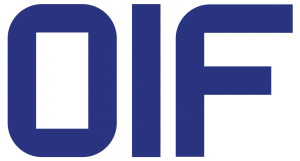Common Electrical I/O
Innovating at the Pace of the Cloud
Leading Network Innovation Since 2002
Artificial Intelligence (AI) and Machine Learning (ML) surprised the world in 2023 as consumers saw the technologies move mainstream. New advancements in AI/ML will change how everyone lives over the next ten years. At the heart of the AI/ML trend is the largest and most influential network(s) inter-connecting each compute node, but most users don’t realize them and the effort that goes on behind the scenes to allow that network to scale.
OIF’s Common Electrical I/O (CEI) implementation agreement is the building block allowing AI/ML to evolve at break-neck speeds. 50G SERDES is now the predominant technology in networking, with over 350 Million lanes shipped by the end of 2023. 100G SERDES are just starting to ship and usher in a new wave of products, enabling the AI/ML boom everyone is chasing.
Revolutionizing Tomorrow: AI/ML Goes Mainstream
One of the earlier projects in OIF was the Common Electrical I/O (CEI), which started around 2002. Those original efforts led to 10G SERDES and standard port interfaces across technologies like Fibre Channel and Ethernet, sharing similar features at 8 Gbps and 10 Gbps, respectively. OIF became a central organization and played an important role in next-generation technologies by taking on this work. In many ways, it is the body behind the hyperscaler’s demand for higher bandwidth. Without OIF, the pace of innovation in the industry would not be as brisk, and the industry would not be pushing towards 800 Gbps and 1.6 Tbps port speeds by 2025.
It takes about three years to generate SERDES speeds and the electrical interface standards, and often, that work becomes a starting or unofficial input for other standards bodies. It is a process that takes much longer than many people think and starts much earlier than the specs we see from the IEEE. In many ways, OIF’s work creates a community that the rest of the industry leverages and ensures compatibility for many groups (Ethernet, Fibre Channel, InfiniBand, proprietary computing centers). Historically, Fibre Channel (FC) and InfiniBand have used the same electrical interfaces, allowing for lower costs and better supply chain standardization. This commonality has helped improve supply chain costs; in some cases, we have seen the same port form factor across all three technologies. 800G highlights this commonality with InfiniBand and Ethernet AI/ML networks utilizing the same foundational technology.
OIF members helped guide some of the designs to allow better use of chiplets, a design approach just now taking off that they had the foresight to think about and incorporate a few years ago. Chiplets will be critical to the next generation of system designs. Ethernet switch chips have analog and logic components. In the past, both would need to shrink at the same pace to reside on the same silicon. But with chiplets, the analog design doesn’t have to shrink at the same pace as the logic component. This will allow older and proven analog components to be attached to the rapid pace of logic innovation. Cheaper systems with better yields are the outcome, which is good for the entire industry. Additional benefits include better cooling (e.g., better power), faster time to market, and interchangeable components. Chiplets allow different IPs to be brought together as the SERDES and logic can come from different companies.
OIF is also at the forefront of energy efficiency with the Energy Efficient Interfaces (EEI) Framework. EEI will help drive next-generation optics that will lower power and drive Linear Direct Drive. OIF enables groundbreaking AI/ML applications to scale by working early and directly on energy-efficient interfaces. At the same time, Chiplets’ efforts enable co-packaged and near-packaged connectivity, which will allow for significant advancements in energy efficiency.
With OIF bringing together people from many different disciplines, expertise from hysperscalers, operators, component, and system companies brought under the same roof helps build a better project. OIF also has an easier process to start working on projects, allowing individuals to bring ideas to market faster. Sometimes, just getting things done quickly really does help move the industry forward in a more positive way.
Unleashing 200G, Fueling AI & ML
Coming on the heels of the recently published OIF-CEI-5.2 112 Gbps specifications, OIF is now busy at work with development on serial 200G electrical, which will be the next big step for the market. ML and AI could not grow without low-cost, high-speed networks, and 200G serial will allow switch technology to move from 51.2Tbps to 102.4Tbps or greater speeds over a few years. To stay updated on OIF’s CEI work and receive ongoing insights, make sure to keep an eye on upcoming industry events where OIF is expected to unveil more of their next-generation offerings that will pave the way for the next big innovation.
Note that although industry convention leverages ‘round numbers’ for SERDES rates, actual OIF projects publish documents at the higher rates of 56G, 112G and 224G to enable broader markets to leverage the specifications for applications that might have higher ‘overhead’ rates.
Authored by: Alan Weckel, Technology Analyst at 650 Group

